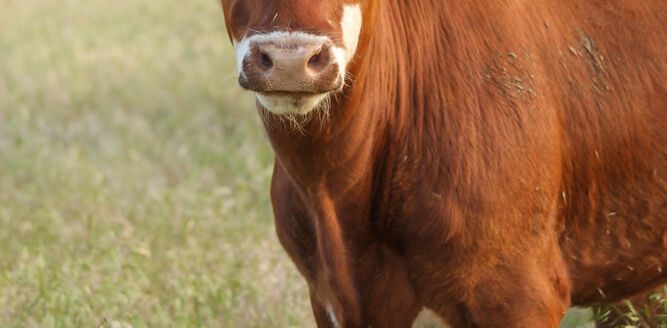Eye tests once determined whether to harvest crops for their grain only or chop the entire plant and ensile it for livestock feed.
“Producers would walk through their fields and say ‘Oh this field, or this part of one, looks like it’s really going to yield well,’ and that would be marked for grain. Everything else would be marked for silage,” said Fred Hall, dairy specialist with Iowa State University.
Science now decides, said the expert based in western Iowa, where the most dairy cows reside in the state, and the most corn silage is produced.
“Our cows are super high-powered,” Hall said. “They have a tremendous will to produce and they need high energy rations to meet their genetic potential.”
Producers strive for corn silage containing 35% moisture—more or less, he said—and just the right amounts of the right ingredients, from starch to dry matter.
A certain degree of calculated patience is now the norm in choosing the right seed and striving for perfect conditions in producing ensilage for livestock feed.
In Hall’s digs, the focus is on dairy cows.
“You want to pick a hybrid that will yield well, and shift from looking at tonnage to ways to convert that to pounds of milk per acre,” he said.
Farmer and rancher Tyler Woods, of Carlton, in southern Dickinson County, Kansas, agrees.
Only his critters are part of the beef pipeline.
“We’re very heavy on the data side, and we have awesome technology on the silage side,” he said. “We own our own equipment and feel like we can do it timely and in control. On a dry matter basis, our silage is our biggest ingredient of our ration in the whole operation.”
Woods holds high esteem for the milk producing brethren.
“I’ve always said us beef producers should look at the dairies, because they get their results back quicker in the form of milk,” he said. “We have to wait 180 days to know if our process made a difference.”
The Woods operation, 1W Beef Inc., includes a grow yard where calves are fed until they weigh from 500- to 900-pounds before they’re sold to commercial feed yards as stocker cattle and finished for slaughter.
The game is more precise these days as producers strive for just the right nutrition and taste.
“We found that cows do better if every mouthful is a well-balanced diet,” Hall said. “They like alfalfa leaves and corn kernels. We get it all mixed so every bit has the proper nutrient requirements. That’s what we’re looking for.”
Earlier in his career, Woods endeavored for the most tons per acre, but the recipe has changed.
“We want our grain and our forage to equal out what fits our operation,” he said. “In really good (wet) years, when feed gets too tall, we don’t use all of the plant. We adjust it to hit the ballpark for what we want.”
Sign up for HPJ Insights
Our weekly newsletter delivers the latest news straight to your inbox including breaking news, our exclusive columns and much more.
One game changer was making kernel processors on silage choppers standard equipment.
“The attachment smashes the kernels, making it easier for the bacteria in the cow’s rumen to digest the nutrients. That’s what we’re doing,” Hall said. “In our area, I can’t think of a single chopper running out there the doesn’t have a kernel processor.”
Ensilage is packed in different forms of silos where it ferments and becomes tasty to the cattle.
“One of the things we learned; we would get done putting silage in the silo, and within a couple days, we were feeding it. The cows weren’t getting the whole value of the feed,” Hall said. “Now the majority of feeders keep their new crop silage three to five months, allowing it to ferment and get it more digestible for the cow.”
The industry needs the best crop, he said, including consistency.
“Cows are creatures of habit,” Hall said. “If you change their rations—in a period of a couple days—they’re not going to do as well,” Hall said.
He likens it to the effect of humans eating a steady diet of steak and then switching to a high fiber diet.
“You wouldn’t feel very well,” Hall said. “We can increase percentages if we have the right fertilization, the right soil type and get the rain when we need it. Yield might be 18 to 19 tons per acre in one area and 26 to 27 tons an acre in another. We know historically what it’s going to be.”
There are a host of variables, and among the more unpredictable factors is weather, which can change expectations or cause producers to pivot their harvest plans.
“Some have the intent of silage from the beginning, and it could be irrigated corn. Then there are the drought years and dryland corn. They may be hoping it was going to be silage, but it’s not going to be enough (forage or grain),” said Jay Wisbey, crop production and Extension agent for Saline and Ottawa counties in north central Kansas.
Tim Unruh can be reached at [email protected].




